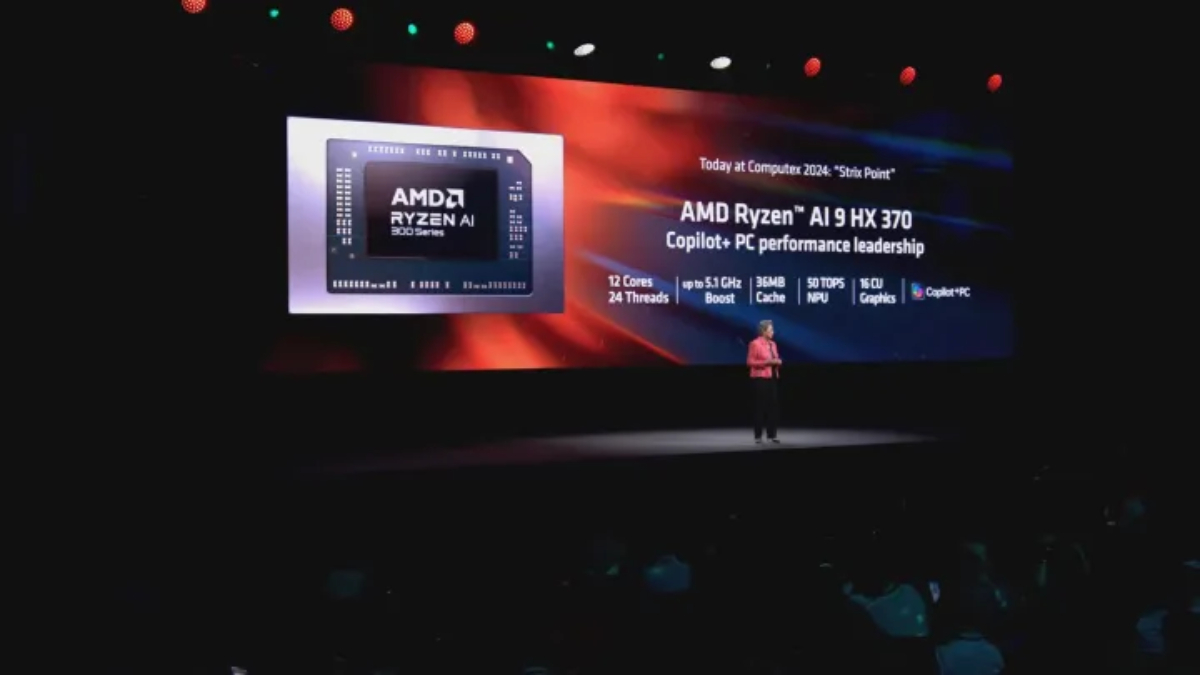At Computex 2024, AMD’s upcoming Ryzen AI APUs garnered significant attention, and recent leaks of Geekbench tests reveal impressive performance for AMD’s flagship APU. The Ryzen AI 9 HX 370 has demonstrated strong capabilities in both CPU and GPU benchmarks, suggesting a substantial generational uplift.
Performance Benchmarks
Geekbench 6.3 CPU Tests:
- Single-Core Score: 2,544 points
- Multi-Core Score: 14,158 points
For comparison:
- Ryzen 5 7600 Desktop CPU:
- Single-Core Score: 2,739 points
- Multi-Core Score: 12,287 points
Despite falling slightly behind in single-core performance, the Ryzen AI 9 HX 370, with its 12 cores and 24 threads, outperforms the Ryzen 5 7600 in multi-core tasks. This demonstrates the APU’s strong multi-threaded capabilities.
OpenCL GPU Test:
- Radeon 890M GPU Score: 41,995 points
This performance places the Radeon 890M on par with the desktop Nvidia GTX 1650 Ti or the mobile RTX 2050, and it surpasses the previous generation Radeon 780M by 40%.
Considerations
- Naming Discrepancies: In the tests, the APU appears as the Ryzen AI 9 HX 170 with a Radeon 880M GPU. However, it is believed that the final name is Ryzen AI 9 HX 370 with a Radeon 890M GPU.
- TDP Range: The new APUs have a scalable TDP ranging from 15 watts to 54 watts. The exact TDP used during these tests is unclear, but if it was on the lower end, the results are even more commendable.
Generational Improvements
Compared to its predecessor, the Ryzen 9 8945HS, the Ryzen AI 9 HX 370 shows a 20% improvement in multi-core tasks. This suggests a significant performance boost, likely due to enhancements in architecture and AI capabilities.
The leaked Geekbench tests suggest that AMD’s Ryzen AI 9 HX 370 APU delivers competitive performance, both in CPU and GPU tasks. This positions it well against current desktop and mobile GPUs, indicating a promising generational leap. The APUs are expected to launch in July 2024, alongside Zen 5 processors, potentially offering even more robust performance and AI integration in mobile computing.


